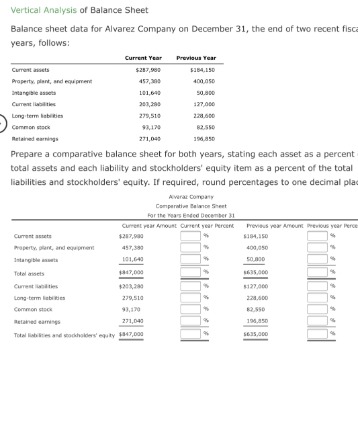
If you need to make adjustments for more than one period, then you must use a separate adjustment general rules for debits and credits transaction for each period. Make sure that the adjustments are correct by selecting the appropriate reports when finished. This article also explains how to use a liability adjustment to correct an employee’s year-to-date information contained in payroll items, such as company contributions, employee addition, and deduction payroll items. When your payroll liabilities are incorrect, you can do a liability adjustment to fix them. Remember, when adjusting payroll liabilities, it is crucial to exercise caution and attention to detail. If you’re unsure about any adjustments or need further guidance, consult with a professional bookkeeper, accountant, or payroll specialist.
These adjustments will ensure that your financial records accurately reflect the changes you need to make based on the review conducted earlier. Once inside the payroll setup, it is important to review the tax categories to ensure they accurately reflect the current tax regulations and any applicable changes. Updating the withholding rates is crucial to ensure compliance with the latest tax brackets and calculations.

Once this is completed, the adjusted figures need to be accurately entered into the payroll system to ensure that all liabilities are properly accounted for and reflect the changes that have been made. Once done, we can now create liability adjustments to zero for some payroll in 2019. If it’s overpaid, check out Resolve a payroll tax overpayment to learn how to handle them.
How to Adjust Payroll Liabilities in QuickBooks?
Learn how to use a liability adjustment to correct employees’ year-to-date (YTD) or quarter-to-date (QTD) payroll info in QuickBooks Desktop Payroll. However, if you’re referring to your adjustments that aren’t showing on the report, you’ll want to make sure that the details are correct. If it’s accurate, you can run the Verify and Rebuild Utility Tools to fix data issues on your company file. First, I want to make sure your QuickBooks company file gets the full functionality of payroll updates. The steps provided by my colleagues are how to address a scenario if payments were never recorded in QuickBooks.
Step 4: Review and Verify Adjustments
Subsequently, it is essential to navigate to the payroll setup within QuickBooks and implement the required changes, which may involve modifying tax categories, updating withholding rates, or adjusting employer contribution parameters. It is essential to review and verify the adjustments made to ensure accuracy in your financial records. You can salary paycheck calculator generate payroll liability reports or review the individual liabilities in your Chart of Accounts to confirm that the adjustments have been applied correctly. Setting up payroll liabilities in QuickBooks Desktop involves configuring tax categories, defining payment schedules, and establishing employee contribution parameters to ensure accurate tracking and reporting of the company’s payroll obligations. By following either option, you will be able to make the necessary adjustments to your payroll liabilities in QuickBooks Online.
The initial step in adjusting payroll liabilities in QuickBooks Online is to identify the specific reasons or events that necessitate the adjustment, such as corrections in tax calculations or changes in employee wage withholdings. The initial step in adjusting payroll liabilities in QuickBooks is to identify the specific reasons or events that necessitate the adjustment, such as corrections in tax calculations or changes in employee wage withholdings. In the world of accounting and bookkeeping, managing payroll liabilities is a crucial aspect to ensure accurate financial records. QuickBooks, a widely-used accounting software, offers various tools and features to help businesses adjust, reconcile, and enter payroll liabilities seamlessly. Once you have reviewed and verified the adjustments, you can proceed with running financial reports, preparing tax filings, and utilizing the adjusted payroll liabilities for accurate financial analysis.
Steps to Adjust Overpaid Payroll Liabilities in the Company File
This option provides a straightforward and user-friendly way to make adjustments quickly and accurately. In this article, we will guide direct allocation method you through the steps to adjust payroll liabilities in QuickBooks Online, providing you with two options to choose from. Whether you prefer using the Payroll Center or the Chart of Accounts, both methods offer a straightforward approach to making adjustments. This involves carefully updating each employee’s hours, wage rates, and any other relevant information in their respective payroll profiles.
By dedicating time to review and verify the adjustments, you can be confident that your payroll liabilities are accurately reflected in QuickBooks Online. This step ensures the integrity of your financial records and reduces the risk of errors or discrepancies. Following the setup adjustments, it is crucial to review and modify individual employee payroll records within QuickBooks Online, ensuring that the recalculated liabilities and taxes accurately reflect the changes made to the overall payroll setup. Subsequently, it is essential to navigate to the payroll setup within QuickBooks Online and implement the required changes, which may involve modifying tax categories, updating withholding rates, or adjusting employer contribution parameters. Following the setup adjustments, it is crucial to review and modify individual employee payroll records within QuickBooks, ensuring that the recalculated liabilities and taxes accurately reflect the changes made to the overall payroll setup.
Adjusting payroll liabilities in QuickBooks Online involves similar steps to the desktop version, with the added convenience of cloud-based accessibility and collaborative functionality for streamlining the adjustment process. You’ll just need to enter the date, amount, and payroll liability items that are shown on the report. Now that you have completed the review and verification process, you can rest assured that your payroll liabilities in QuickBooks Online are accurately adjusted, reflecting the changes you have made.
- This option allows for a more granular approach to adjusting payroll liabilities, enabling you to make precise changes based on your specific needs.
- Setting up payroll liabilities in QuickBooks Desktop involves configuring tax categories, defining payment schedules, and establishing employee contribution parameters to ensure accurate tracking and reporting of the company’s payroll obligations.
- Please note that adjusting payroll liabilities should be done with caution, as it can have a direct impact on your financial statements and tax reporting.
- Most businesses must submit their last month’s payroll deductions to the Canada Revenue Agency (CRA) by the 15th of the current month.
- By diligently following these steps, you can ensure that your payroll liabilities are accurately adjusted in QuickBooks Online.
Fix the Payroll Liability Balance Report and the Liability Cheque
Once you’ve found its cause, you can follow the specific steps for your situation in our Scheduled liabilities payroll show as overdue or in red article. I understand that you’ll want to ensure you’re recording your previous tax payments correctly. If you use QuickBooks Desktop Payroll Assisted, contact us if you need to make an adjustment for a previously filed tax form or payment. Most businesses must submit their last month’s payroll deductions to the Canada Revenue Agency (CRA) by the 15th of the current month. If you’re still having issues with these liabilities after trying the recommendations from my colleague, then I suggest contacting our Customer Support Team.
